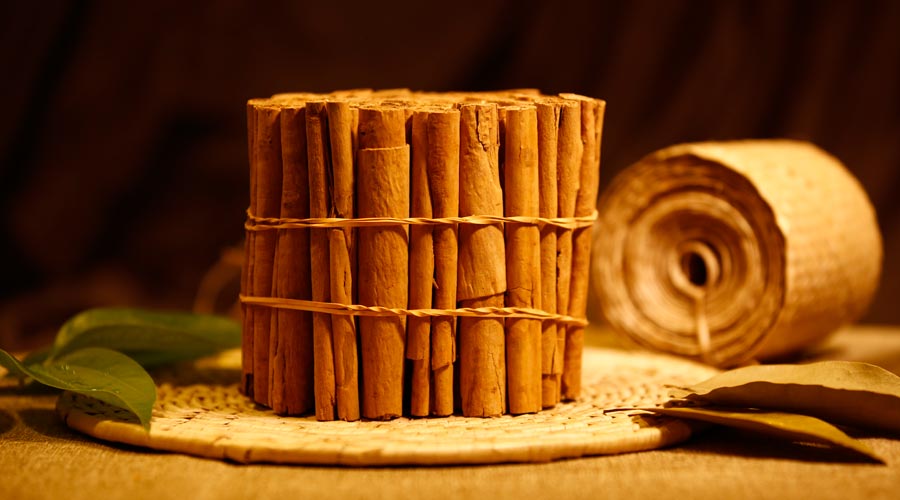Once as valuable as gold, Ceylon cinnamon, also known as true cinnamon, is renowned for its health benefits and sweet flavor. Predominantly produced in Sri Lanka, which supplies 90% of the world’s Ceylon cinnamon, this spice faces fierce competition from a lower-quality rival, Cassia. Despite the health risks associated with Cassia, it dominates the global market due to its significantly lower cost. This article delves into why Ceylon cinnamon is considered the best in the world and explores the challenges it faces in a market flooded with cheaper alternatives.
The Harvesting Process of Ceylon Cinnamon
In the process of harvesting Ceylon cinnamon, workers typically begin their day before sunrise. This timing is crucial as it allows the cinnamon trees to retain moisture, which in turn makes the bark easier to peel. The inner bark of the cinnamon tree is the prized source of Ceylon cinnamon, known for its superior quality and flavor.
After about four hours of cutting branches, they are transported back to the main building of the estate. Here, they undergo a soaking process to further facilitate the peeling of the bark. Skilled workers then meticulously scrape off the outer bark to reveal the softer inner bark. This inner bark is carefully sliced into thin strips known as quills. As these quills dry, typically over the span of about a week, they naturally curl up, forming the characteristic shape associated with Ceylon cinnamon.
Grading and Valuing the Quills
Once dried, the quills are sorted by graders like Violet, who can evaluate thousands of quills a day. The highest quality, known as Alba, is as thin as a pencil and twice as valuable as the lowest grade, H2 FAQ. Only one in twenty-five quills achieves the Alba grade. After sorting, the quills are cut to various lengths for packaging, with long cuts sold wholesale and shorter sticks destined for grocery stores.
Historical Significance and Market Dynamics
Ceylon cinnamon has been a valued commodity since 2000 BC, traded across the ancient world and prized for its sweet aroma. By the 13th century, Sri Lanka was exporting directly to Egypt, and Arab traders brought it to Medieval Europe. The spice was so coveted that it became a status symbol for the wealthy. Over time, European powers fought for control over Sri Lanka to monopolize its cinnamon trade, but by the mid-20th century, the country had regained independence and control over its cinnamon lands.
However, the emergence of Cassia, a cheaper alternative from East and Southeast Asia, has significantly impacted the market. Cassia, derived from a different tree with thicker bark, can be harvested more efficiently and in greater quantities, making it more economically viable for large-scale production.
Health Implications and Consumer Awareness
While both Ceylon and Cassia cinnamon offer health benefits, Ceylon cinnamon is superior in boosting the immune system, lowering blood pressure, and stabilizing blood sugar. Cassia contains high levels of coumarin, a compound that can cause liver damage in large doses. Despite this, the lack of stringent labeling laws allows for widespread mixing and misrepresentation of the two types.
Consumers can distinguish between the two when buying cinnamon sticks: Ceylon quills are more fragile and have a brown hue, while Cassia sticks are thicker, redder, and harder to break. In powdered form, however, the distinction becomes almost impossible, leading to frequent adulteration.
Regulatory Challenges and Future Prospects
The European Union’s recent geographical indication (GI) tag for Ceylon cinnamon mandates that any product labeled as such must originate from Sri Lanka, akin to the way champagne must come from a specific region in France. While this is a significant step towards protecting the authenticity of Ceylon cinnamon, it does not entirely solve the problem. In both the EU and the US, brands are not required to disclose the type of cinnamon used, leaving consumers in the dark.
To further safeguard the industry, experts like D. Silva advocate for including the botanical or species name on product labels, ensuring transparency and helping consumers make informed choices. This measure could also support the thousands of Sri Lankan producers who depend on cinnamon cultivation for their livelihoods.
Conclusion
Ceylon cinnamon’s journey from ancient trade routes to modern supermarket shelves is a testament to its enduring value and appeal. Despite the challenges posed by cheaper alternatives and market adulteration, efforts to protect and promote true cinnamon continue. By increasing consumer awareness and enforcing stricter labeling laws, the rich heritage and superior quality of Ceylon cinnamon can be preserved for future generations, benefiting both producers and consumers alike.
